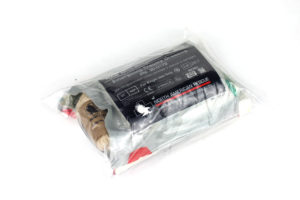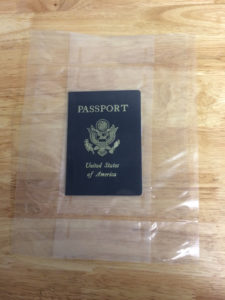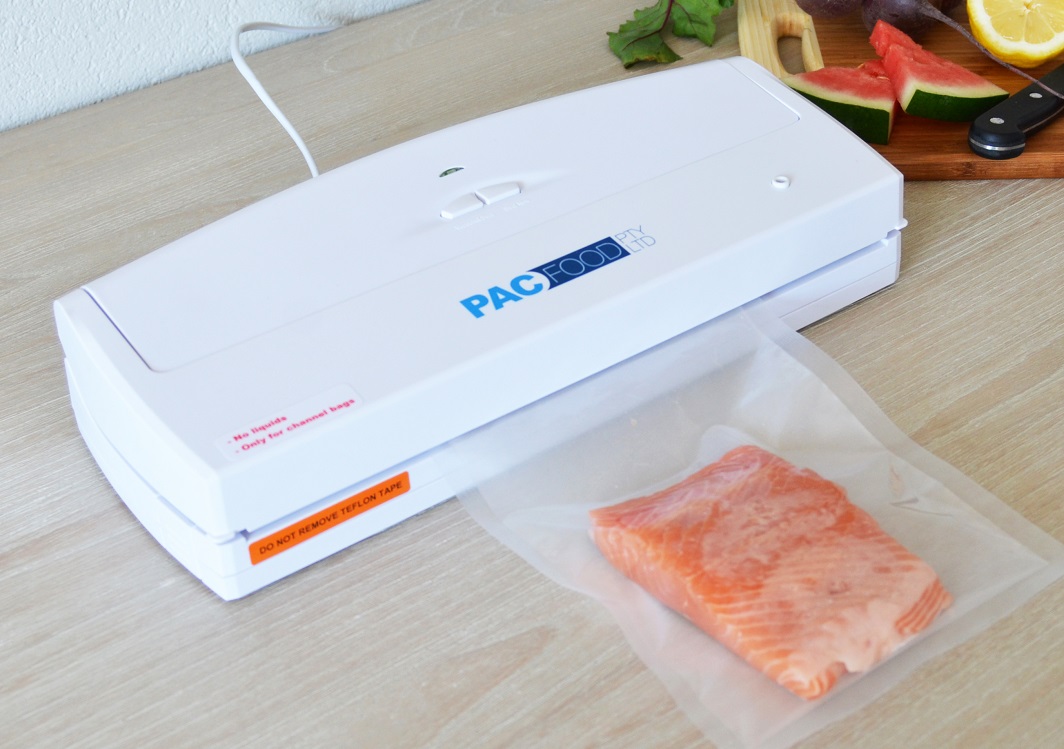
A best friend in need (BFIN) is a great friend indeed – especially if it can suck the air out of every bag, helping you organize the shit out of your B.O.B.
I was, of course, referring to the vacuum sealer (although that could have easily described every guy’s first-gold-digger-mistaken-for-true-love relationship), a great piece of technology that makes packing a piece of cake. Sure, many of you would come off telling me that this nifty gadget’s been around for quite a while and that I should get out more, but better late than never, as our grandparents used to say.
Indeed, I have to admit that the vacuum sealer’s been somewhat of a late-coming revelation, but that’s mostly because I had the impression that there’s nothing more than I could’ve learned about neat packing.
I was dead wrong. Anyway, I stumbled upon this gadget during one of my trips to the downtown thrift shop – paid around 15 bucks for the sealing machine and two dozen packs of sealing bags. I guess you can also order it online or find it at a hardware store or something, but if you come across one in a thrift, don’t miss out on the opportunity.
So, after packing everything that can be packed, I decided to write this piece to share with you people just how helpful such a doodad can be, especially if you have trouble organizing your stuff. And because nobody likes very long and tedious foreplay (unless there’s booze involved), here are a couple of cookie ways of how to use a vacuum sealer around the house.
- Creating weatherproof containers for your meds
Why waste a truckload of bucks on the weatherproof first-aid kit when you can create one using vacuum sealer bags? Thank you, Internet, for telling me this after spending 150 bucks on a heavy-duty kit from my local drug store.
Anyway, if you really want to make a medkit that can withstand anything from heavy rains to snow storms or any Kingdom Come events, grab everything you need and place them in one of these nifty bags. Be careful when sealing your items, especially when it comes to stuff that doesn’t take kindly to moisture. A great workaround would be to seal your medical supplies with a small desiccant silica gel pack.
That should get rid of any remaining moisture. Now, if you really want something hospital-grade, you can try out this nifty trick – get yourself one of those cosmetics bags (you can usually find them in any supermarket, especially around Father’s Day) or a padded Pepsi cooler. Next, take everything out of your regular first-aid kit and separate them. Put your pickup scissors in one sealable bag, sterile gauze in another, painkiller meds in the other, and so on.
Make sure that every object is sterile before placing them in the sealable bags. Vacuum the air out of each bag, place packs in your cooler or cosmetics bag and, voila, you now have a hospital-grade first-aid kit. What I like to do is leave a small gap in the upper part of the bag, in cases I need to break open the pack really fast (you should do this for stuff like gloves, gauze, and pickups). You can seal off the rest completely.
- Storing important documents and copies
As you know, one of the most crucial aspects of preparing a bug out bag is ensuring that you have at least one folder or something that contains copies after important items such as house deed, medical insurance, driver’s license, and whatnots. Sure, you can go ahead and buy a folder or something for your documents, but watch out for drizzles or snow.
One clever way of making sure that your docs remain intact no matter what would be to put them in a vacuum sealer bag. I did this for all my docs and copies, Yes, you can seal even the originals. Now, if you have very old documents, it would be a good idea to laminate them instead of placing them in vacuuming bags.
Apart from the fact that they look really neat and ready to be framed, the lamination foil also protects them from stuff like oil, moisture, dirt, dust or anything that may hasten the paper’s weathering rate. I found out that vacuum sealing is a great way to safeguard old docs, books, sketchbooks, and notebooks from those blasted paper moths which literally eat everything in their path (that’s how I lost my Don Quixote princeps edition).
- Keeping valuables away from prying eyes
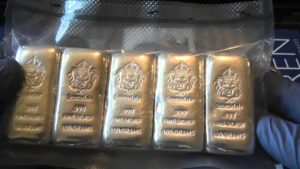
If you have valuable objects like jewellery, gold & silver bullion, Tim Hortons discount tickets, you should consider vacuum sealing them before stashing them in your hiding place of choice. In this form, they’re way easier to retrieve and, believe it or not, vacuum protects valuable objects from things like moisture, dirt, dust, mold, mildew, and, of course, people who ask far too many questions.
If you have gadgets that are no longer of use to you, don’t throw them away if you can salvage the component. Put them in a sealable bag and stash them in your garage or something. Remember that in an SHTF situation, an older but functional phone battery can become more valuable than a bar of gold – priorities! It’s always a question of priorities.
- Crafting tailored MREs
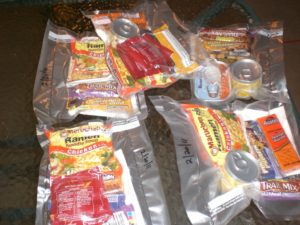
Nothing beats that feeling of having a well-organized B.O.B, especially when it comes to the food part. MREs come in all shapes and sizes, meaning that sometimes it’s pretty challenging to keep everything nice and tidy. A great workaround would be to make tailored, vacuum-sealed MREs.
Here’s the deal: no two preppers have the same tastes in food. I, for one, like homemade meals ready to eat and would gladly get rid of stuff like crackers, biscuits, beef jerky, trail mix or potato chips. Whatever your SHTF culinary preferences are, sealing the food in vacuum bags will help you save a lot of space, which you can use for other gadgets and trinkets. Just be sure to toss a pack of desiccant silica gel in each food bag before using the vacuum to suck the air out.
- Weatherproofing hiking and camping supplies
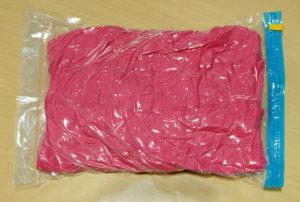
Yes, I know you can use cheap garbage bags to weatherproof your clothes and undies, but do bear in mind that a thin plastic sheeting won’t keep your stuff dry for long, especially if there’s extra moisture in the air. One way of making sure that your clothes retain that out-of-the-wardrobe freshness would be to vacuum seal each piece of apparel before tossing them back into your B.O.B or hiking pack.
- Creating cheap storage containers for oil, vinegar, salt, and sugar
Among other emergency food, oil, vinegar, salt, and sugar are known to last almost indefinitely, provided that they’re stored in the proper conditions. With a vacuum sealer, you can create ultra-safe containers for your foods.
Sugar and salt are easy to pack, but you may want to pay extra attention when vacuum sealing oil and vinegar (you should consider looking for bags that come with bottlenecks and stoppers). Moreover, you can also make B.O.B versions by using smaller sealable bags.
- Making awesome marinades
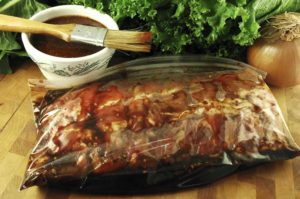
As you know, some types of meats like wild game, need to sit in a marinade for at least a couple of days before it can be cooked. Sure, you can put everything in a zip-lock bag before sticking it in a freezer, but there’s always that small chance of air getting inside.
Another reason why it’s better to use vacuum sealer bags has very much to do with refrigeration. Zip-locked marinade needs to stay cool. Meat and marinade that have been vacuum sealed can be kept basically anywhere because there’s no air left to oxidize the meat. Go ahead and have fun with your vacuum-sealed marinade. Just be sure to cook it soon.
- Easy icepacks
Don’t have anything on hand to put the ice in? No problem! Take the ice out of the freezer and toss in a small vacuum bag. Seal, make sure there are no leaks and use immediately. You can also stockpile icepacks for later use.
- Making spice and condiment packs
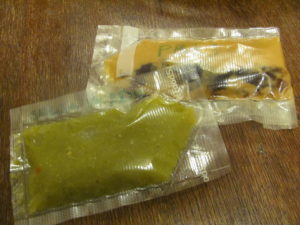
Remember the last time you were out camping, and you had to carry all these spice and condiments packs because you didn’t know for sure which one would pair best with the meat?
Well, if you have one of these awesome gadgets, you can make your own condiment packs and spice mixes. Even better is the fact that you can make person-tailored portions. For instance, if you’re more partial to mustard than to ketchup, you can put a little extra for yourself.
Same goes for the other members of your family or hiking group. As for the spice pack, the vacuum sealer eliminates the need to carry all these small packs of salt, pepper, paprika or whatever. Save yourself the trouble of having to carry those around by creating your very own spice mix. Here’s my all-time favorite:
- Dried minced onion (around three tablespoons).
- Dried thyme (one tablespoon).
- Allspice (one or two tablespoons).
- Black pepper (one tablespoon).
- Cinnamon (one teaspoon).
- Cayenne pepper (one or two teaspoons).
- Sea salt (one teaspoon).
- Garlic powder (one teaspoon).
Crush everything into a fine powder, add to your sealable bag, give it a shake or two, and enjoy.
- Storing bed sheeting and linen
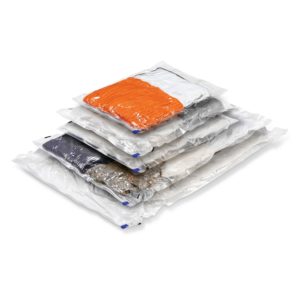
I used to have an entire wardrobe filled with bed sheets and linen. Yes, I know everyone has trouble organizing it, which is exactly the reason why I went ahead and tried to vacuum-seal everything inside.
It’s best to do this after ironing them (allow them to cool down before bagging and tagging to ensure that there’s no moisture inside the pack). You can throw a pack or two of desiccant silica gel if you like. Anyway, I very much prefer vacuum-sealing my bed stuff because you can store them virtually anywhere, leaving you with extra space for new clothes or whatever.
It’s best to take this one step at a time. First vacuum-seal your winter linen, while keeping the spring\summer stuff within reach. When the time comes to use them again, pop open the bags, and seal the rest. You can do the same with jackets, parkas, hunting socks, scarves, gloves or anything wintery.
That’s it for my list on how to take full advantage of your vacuum sealer. As I’ve mentioned, the machine itself is very cheap (you can probably find one in a thrift store as I did). Still, you may have some trouble finding suitable bags – try Amazon or inquire at the store. You can always buy plastic rolls, cut them to shape, seal one end with a laminator or something if you’re looking to upscale or downscale project. Missed anything? Hit the comment section and let me know your thoughts.


